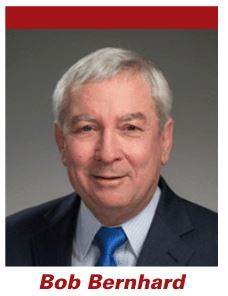President’s Column

From the President of I-INCE: INTER-NOISE 2021 and the Future of Congresses
As I write this article, we have just concluded INTER-NOISE 2021, the 50th INTER-NOISE meeting. First, I want to thank the Organizing Committee of the Congress and its President, Raj Singh, for their hard work and adaptability in response to all of the challenges of 2021. The congress was described to me by several participants as “the best virtual conference they’ve attended”. This is a credit to the innovation and effort of the Organizing Committee. In particular,
I know that authors and attendees appreciated that all sessions were live and timed for participation by authors regardless of time zone. The networking sessions and posters were also a feature of this congress that helped us to achieve some connection with old friends and the ability to discuss issues with our colleagues. To the Organizing Committee, well done. And to all of the participants, thank you for your contributions.
One of the disappointments of the congress was the downsizing of our plans to celebrate the 50th INTER-NOISE. The original plan for the congress was to revisit the site of the first congress in 1972 in Washington D.C and use this as an opportunity to look both backward and forward. That first congress in Washington was truly an international congress and was well attended. It occurred at a time of emerging noise control policy mandates. In fact, the delegates at INTER-NOISE 1972 interacted with the White House and the US Congress during the meeting. The US Noise Control Act of 1972 was passed later that year. Other countries were also developing policies at this same time. Those mandates launched quite a bit of the foundation that serves as a basis for global noise control policy and practice that persists today. It was our hope at this congress to celebrate that history. We did. but only modestly.
One of the highlights of this congress for me was the projections of the future of noise control engineering. If you haven’t seen them, I recommend that you view the plenaries and keynote speeches in particular. It is clear that emerging technologies such as materials, information technology, and sensing (internet of things) will have a profound impact on the tools and techniques we have available. If I project even further to the future based on my “day job” as a Vice President for Research, I expect to see impacts to our community from emerging areas of research in neuroscience and quantum technology. But, with all of these tools, will our world be less noisy? Real progress in making our world more pleasant and our environment more harmonious with our activities, depends on the will of the citizenry and policymakers. Where there is such a will, noise control engineers must step up to the opportunities and show what is possible, and persist in implementing the solutions that achieve a more pleasant environment. I hope you will all look for these opportunities.
Another highlight was the Latin American Symposium and associated activities that ran through the congress. I caught only brief glimpses of these activities but I was very impressed and pleased with the participation of a large number of delegates who normally have not joined us. It was good to see. Thank you to the organizers and participants from Latin America.
In conclusion, thank you to the INTER-NOISE 2021 Organizing Committee for a job well done. And onward to INTER-NOISE 2022 in Glasgow!
Bob Bernhard
President, I-INCE


